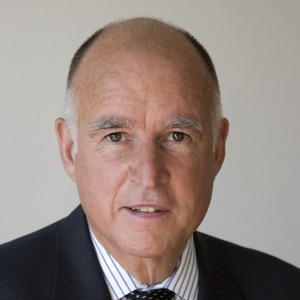California Gov. Jerry Brown signs major climate bills into law

September 8, 2016
BY Ron Kotrba
Ten years after California adopted the toughest greenhouse gas emission reduction goals in the nation, Gov. Jerry Brown signed two major climate bills into law Sept. 8—SB 32 and AB 197. The new laws require the state to cut emissions at least 40 percent below 1990 levels by 2030 and invest in communities hardest hit by climate change.
“Climate change is real, and knowing that, California is taking action,” Brown said. “SB 32 and AB 197 are far-reaching moves that continue California on its path of vast innovation and environmental resilience.”
California is on track to meet or exceed the current target of reducing greenhouse gas emissions to 1990 levels by 2020, as established in the California Global Warming Solutions Act of 2006 (AB 32). The new 2030 requirement in SB 32 will help make it possible to reach the ultimate goal of reducing emissions 80 percent under 1990 levels by 2050, the governor’s office stated.
State Sen. Fran Pavley, who introduced SB 32, said, “SB 32 sends an unmistakable message that California is resolute in its commitment to remain on that healthy and prosperous course.”
AB 197, introduced by State Assemblymember Eduardo Garcia, establishes a legislative committee on climate change policies to help continue to ensure the state’s actions to reduce greenhouse gas emissions are conducted with transparency and accountability.
“In order for California to remain an economic and environmental leader the state will need to also be a trailblazer on issues related to equity,” Garcia said. “Placing the health and economic impacts of climate policy on vulnerable populations second will stunt the state’s prosperity.”
Shelby Neal, the director of state governmental affairs for the National Biodiesel Board, said, “California continues to demonstrate its leadership on climate issues with Gov. Brown’s signing of SB 32 today. The bill will ensure that the future of low carbon fuels in California remains bright. Biodiesel and renewable diesel are leading credit generators under the low carbon fuel standard (LCFS) and we expect their presence to continue growing with the expansion of this landmark policy. The Air Resources Board has done a tremendous job implementing the LCFS, and air quality for all Californians is better as a result.”
Advertisement
Advertisement
Related Stories
Legislation pending in Nevada aims to create a sustainable aviation fuel (SAF) incentive fund that would provide an incentive of $2.50 per gallon to domestic air carriers to support the purchase of SAF produced within the state.
The U.S. Department of Energy on May 30 released an updated version of its 45ZCF-GREET modeling tool to account for new feedstocks and methods of production, including ethanol from corn wet-milling and natural gas from coal-mine methane.
Editor's note from the Summer 2025 issue of Biodiesel Magazine
Legislation pending in the Illinois legislature aims to create a clean transportation standard (CTS) that would require a 25% reduction in in the lifecycle carbon intensity (CI) of ground transportation fuels within a 10-year period.
A notice published in the Federal Register by the U.S. EPA indicates that far fewer parties than originally anticipated have registered with the agency as biointermediate producers under the Renewable Fuel Standard.
Upcoming Events










